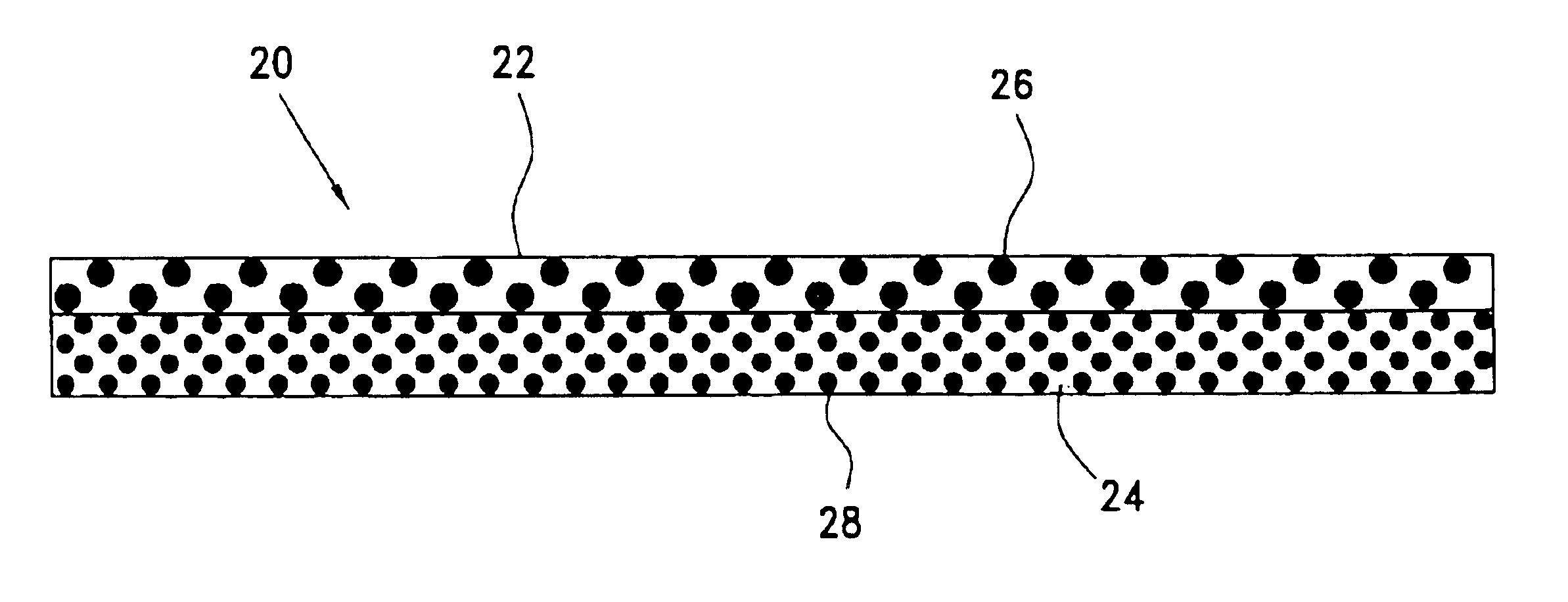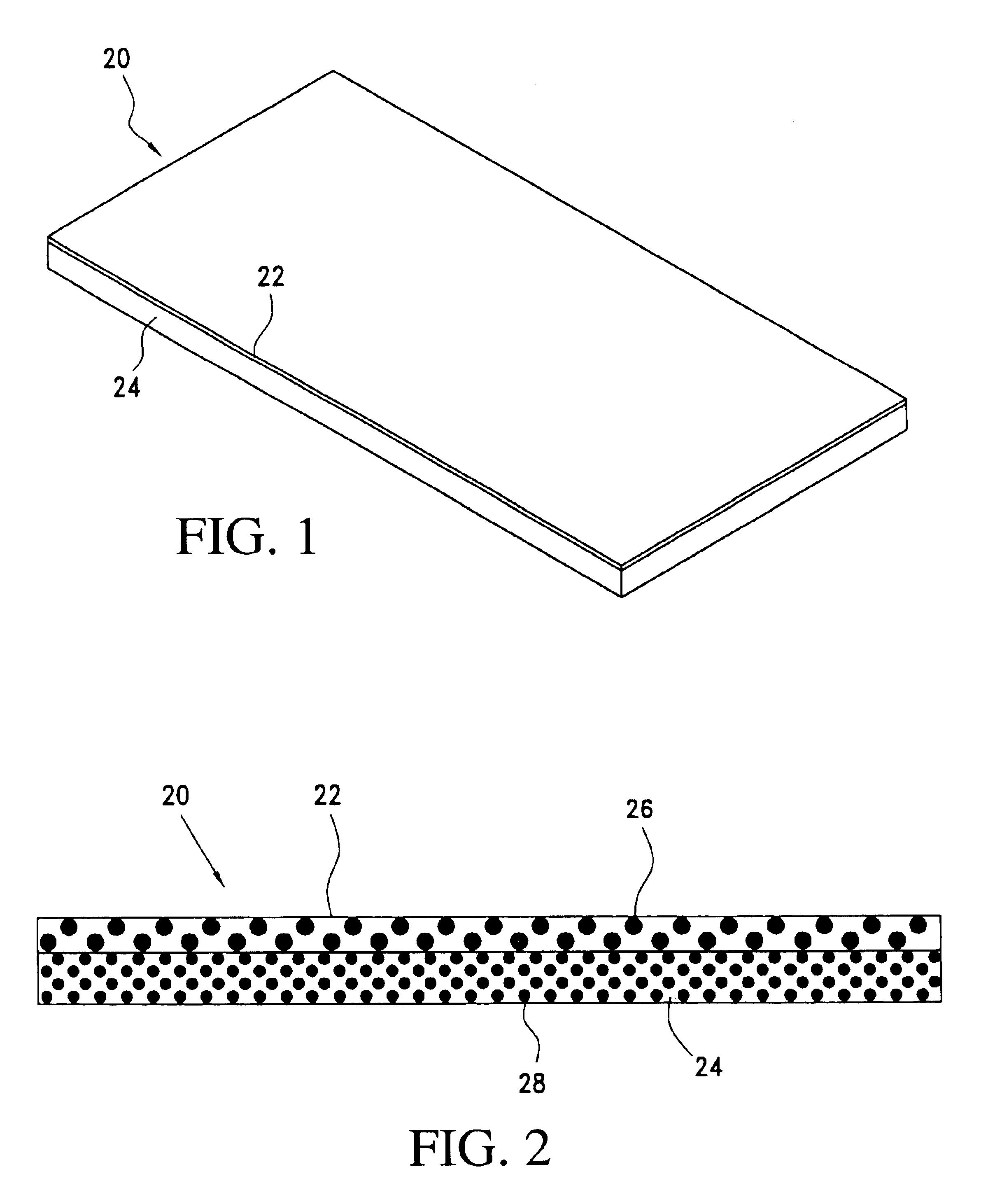Composite non-woven ink absorber
a technology of ink absorber and non-woven fabric, which is applied in the field of composite non-woven ink absorber, can solve the problems of clogging the waste ink absorber, not always uniform ink collection, and unable to efficiently and uniformly disperse waste ink
- Summary
- Abstract
- Description
- Claims
- Application Information
AI Technical Summary
Benefits of technology
Problems solved by technology
Method used
Image
Examples
example # 1
Example #1
The ink impression 58 displayed in kraft paper 56 in FIG. 6 is very minimal at the time stage tested. The ink that was dispersed in the first example of a composite non-woven felt 50, in accordance with the present invention was drawn away from a top surface of top layer 52 of the composite non-woven needlefelt 50 and was received and held in the body of the second layer 54 as has been disclosed previously in connection with the present invention.
The ink impression 64 shown in kraft paper 62 in FIG. 8 is substantial at the time stage tested. The ink that was dispersed in the non-composite non-woven felt 60 did not quickly draw away from top surface and thus the potential for waste ink accumulation at the surface is high.
example # 2
Example #2
The ink distributions 74, 84 and 94 in FIGS. 9, 10, and 11 show the ink entry point and ink dispersion over the time stage tested. The ink that was dispersed in the composite non-woven felt 70 was quickly drawn away from the top surface of top layer 72 of the composite non-woven needlefelt 70 and was received in the body of the bottom layer 76 in a uniform and efficient manner in accordance with the present invention. The diameter of the ink distribution 74 in FIG. 9 equals 70 mm. It is to be noted that FIGS. 9, 10 and 11 all are of the upper or top surface of their respective composite or non-composite needlefelts. These thus all show the entry pattern made in each needlefelt by the volume of ink applied to each.
Turning now to FIG. 12 there is shown a bottom view of the three layer composite non-woven needlefelt 70 of FIG. 7. The bottom surface of the lowermost layer 76 of the three layer composite non-woven needlefelt 70 shows an ink distribution pattern 100 of 250 mm. T...
PUM
| Property | Measurement | Unit |
|---|---|---|
| density | aaaaa | aaaaa |
| density | aaaaa | aaaaa |
| density | aaaaa | aaaaa |
Abstract
Description
Claims
Application Information
 Login to View More
Login to View More - R&D
- Intellectual Property
- Life Sciences
- Materials
- Tech Scout
- Unparalleled Data Quality
- Higher Quality Content
- 60% Fewer Hallucinations
Browse by: Latest US Patents, China's latest patents, Technical Efficacy Thesaurus, Application Domain, Technology Topic, Popular Technical Reports.
© 2025 PatSnap. All rights reserved.Legal|Privacy policy|Modern Slavery Act Transparency Statement|Sitemap|About US| Contact US: help@patsnap.com



